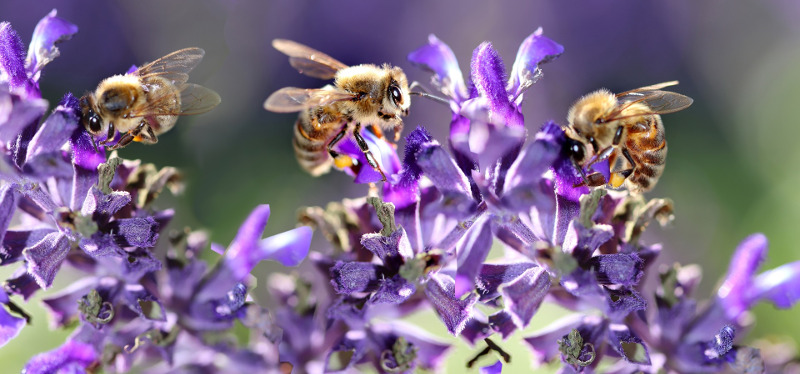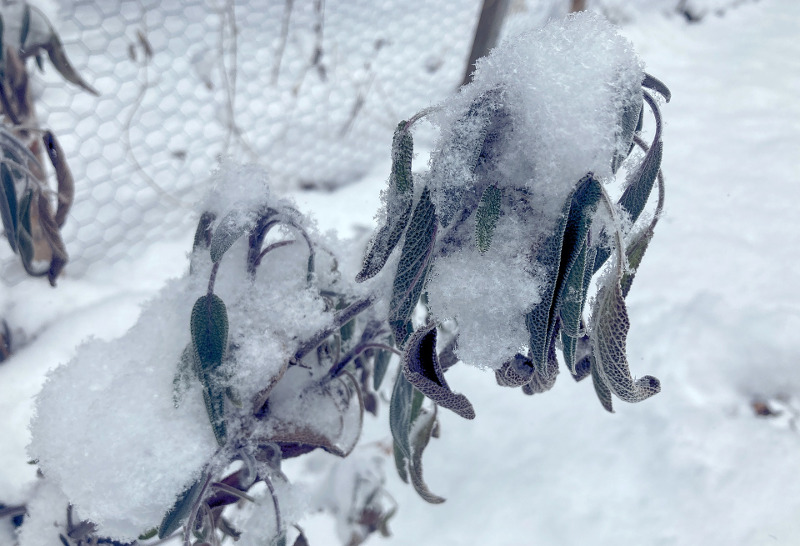Salvia is the largest genus of plants in the mint family Lamiaceae, with nearly 1000 species of shrubs, herbaceous perennials, and annuals. Within the Lamiaceae, Salvia is part of the tribe Mentheae within the subfamily Nepetoideae. Often referred to as sage, this plant has spikes of densely packed flowers with tube-like blossoms in colors of blue, pink, yellow, purple, red, or white. Salvia stems are square with velvety leaves.
Hardy in USDA zones 5-9, this plant is heat and drought tolerant and thrives in full sun. Depending on the variety, Salvia can grow 18 inches to 5 feet tall. A perfect addition to a summer garden bed, Salvia is also great for borders, walkways, or wildlife gardens.

Planting Salvia
Salvia will flower best in full sun and with good draining soil. This plant does not like to be crowded and needs good air circulation. Refer to its mature size when planting and space accordingly, 1-3 feet apart. Salvia will grow in most kinds of soil, as long as it is well-drained. Dig a hole twice the diameter of its container, placing the root ball in the hole level with the soil surface. Fill in with soil, patting down gently. Water well after the initial planting.
Watering Salvia
Salvia is a very drought tolerant plant. If there is regular rainfall or irrigation, you will not have to provide additional water. Typically, this would be one inch of moisture a week. Excessive watering can cause root rot or disease. It is best to water Salvia in the morning, trying to avoid getting the foliage wet. Saturate the soil around the base of the plant allowing the soil to completely dry out in between waterings. A layer of mulch around the base of the plant can help to retain moisture during the hot summer months.

Fertilizing Salvia
Most Salvias are light feeders, meaning that they do not require fertilizing throughout the season. A light application of a balanced fertilizer or compost in the spring can encourage growth and more blooms. Salvia plants that get too much fertilizer, or are planted in too rich of a soil, can become leggy and flop over. Mulching around the base of the plant can add additional nutrients as the mulch decomposes.
Pruning Salvia
If left to grow on its own, Salvia will most likely bloom two times throughout the growing season. If you would like your Salvia plant to continuously bloom, then you will want to prune the plant throughout the season. Deadheading, removing the spent flowers, encourages reblooming. Some varieties of Sage can develop woody lower stems. These stems can be cut off if you wish. As the cold weather season approaches, many Salvia plants are cut down to the ground to overwinter.

Caring For Salvia in Pots
Salvia can be successfully grown in a container. Taller varieties can be a thriller while low-growing Salvia can be a filler or spiller. Salvia plants like good air circulation. Be sure the container you choose is a large one with drainage holes. This plant is not picky about soil, so an all-purpose garden soil mixed with perlite will work. Perlite helps water to drain quickly. A layer of mulch at the base of the plant will protect the roots, plus keep the soil temperature and moisture consistent. Water the plant weekly, allowing the soil to completely dry in between.
Winter Care for Salvia
Salvia will go dormant during the cold months and need very little care over the winter. You can leave the plant alone and it will go to seed. This will provide food for birds during the winter. Or, you can prune the plant prior to the first frost to prepare for the winter months. Cut the stalks just above the basal foliage. Remove any dead plant material that you notice. Mulch around the base of the plant to protect the roots. The biggest concern over the winter will be the plant getting too much moisture from snow.

| Kingdom: | Plantae |
| Clade: | Tracheophytes |
| Clade: | Angiosperms |
| Clade: | Eudicots |
| Clade: | Asterids |
| Order: | Lamiales |
| Family: | Lamiaceae |
| Subfamily: | Nepetoideae |
| Tribe: | Mentheae |
| Genus: | Salvia |
Common Salvia Care Questions
Do Salvias Come Back Every Year?
There are several types of salvias that are hardy perennials (herbaceous salvias) but most are tender perennials, meaning they can come back every year, but will likely require protection through the winter months.
Is Salvia Invasive?
Salvias are not generally considered to be invasive, though there are some species that can be mildly invasive in some regions of the country. Salvia Ethiopia is considered invasive in parts of Colorado, Washington, Oregon, Arizona, California, Idaho, and Nevada.
What Plants Are In The Salvia Family?
The Salvia genus, aka sage, consists of nearly 1000 species, including chia! Many species are considered to have medicinal qualities.
Are Salvias Drought Tolerant?
Salvias are both heat and drought-tolerant and will perform their very best in full sun!
Why Do Salvia Leaves Turn Yellow?
Yellow leaves on salvia may be a sign that they're being under or overwatered. You can check by sticking your finger down in the soil and if it's still wet an inch down, you can probably wait another day or two before watering. If the bottom leaves are yellowed, but the top of the plant is still a nice, healthy shade of green, there may be a nutrient deficiency that can be remedied by applying a bit of slow-release granular fertilizer around the base of the plant.
What Is Salvias Growth Rate?
Salvias come in many forms, from low growing for flower bed edges to some that grow to 5 or 6 feet high in a single year. They vary greatly in width also, from 1 to 4 feet.
Have a question about Salvia? Fill out the form below and we will try and get back to your question as soon as possible. We may even feature your question on this article to help other gardeners!
 |
Author Chris Link - Published 07-07-2021 |
